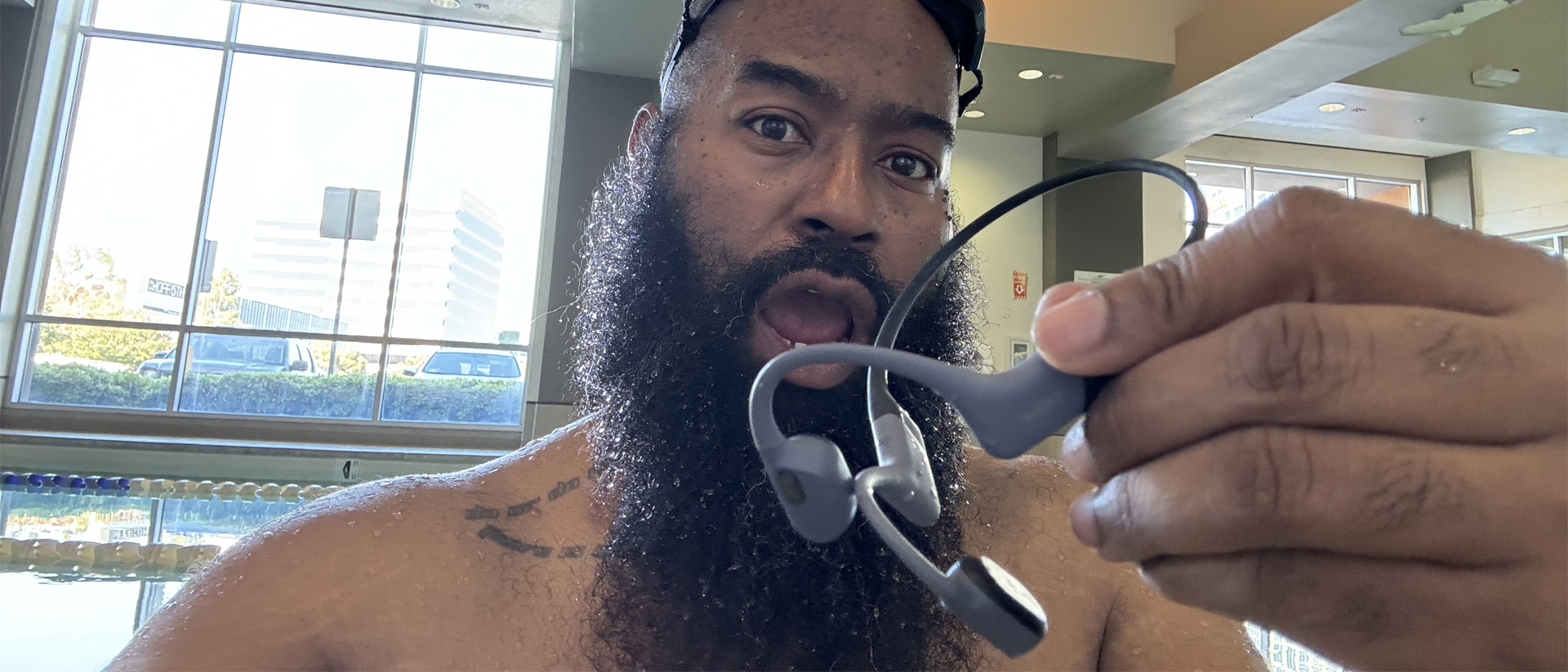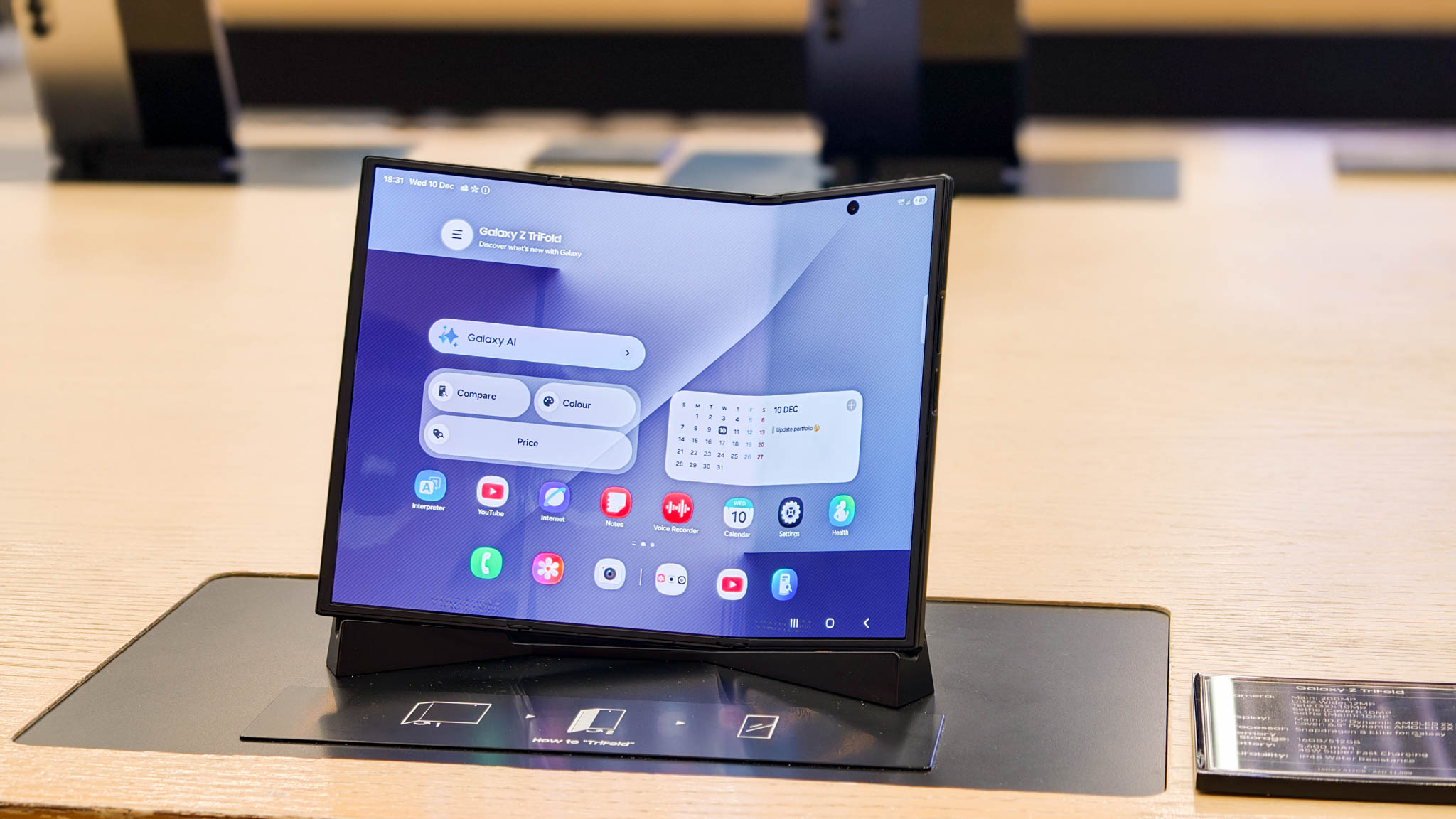Android Central Verdict
Shokz OpenSwim Pro and OpenFit Air have some surprisingly effective features. The OpenSwim Pro is unlike anything I've experienced in the water. Actually, it's the only audio product I've experienced that way. The bar is set high, and if you spend a lot of lap time at shallow depths, it's amazing! I highly recommend it. OpenFit Air differentiates itself from the more expensive OpenFit in a few ways, including being easier on the wallet. They're definitely worth checking out if you need unobstructed ear canals for outdoor exercise, your work environment, or because you don't like in-ear or over-ear products.
Pros
- +
Glasses and ear-piercings friendly
- +
Unobstructed ear canals (situational awareness)
- +
Underwater audio quality (Pro only)
- +
Battery life
- +
32GB Standalone MP3 functionality (Pro only)
- +
Weight/comfort
Cons
- -
Light on the bass response
- -
Ticklish folks may find them irritating (Pro)
- -
Not "pocketable"
- -
Not salt water friendly (Pro)
Why you can trust Android Central
Open-ear or bone-conduction audio tech is niche, but there are legitimate reasons why people need uncovered ears when running or working outdoors. If that applies to you, Shokz has been at the forefront of those technologies and continues to prove themselves with their latest products.
"Niche" may be the first word that comes to mind with Shokz's OpenSwim Pro bone conduction headphones. But after I swam my first lap and took my first sustained underwater plunge wearing the OpenSwim Pro, the next word that came to mind was "impressive."
By comparison, the affordable OpenFit Air aren't quite as distinct. But that's okay: they're more likely to appeal to non-swimmers or anyone on a budget.
Shokz OpenSwim Pro, OpenFit Air: Price and availability
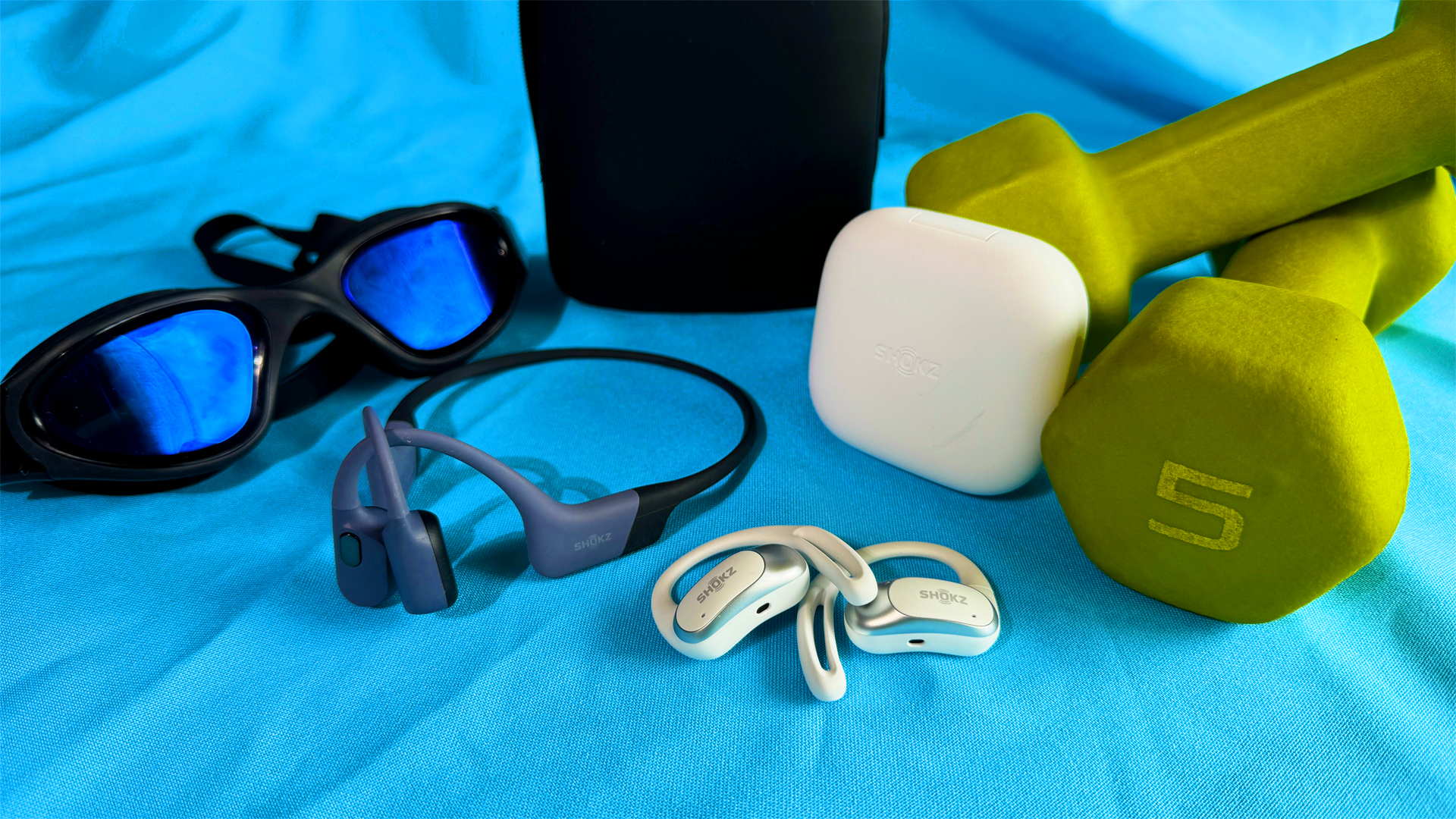
Shokz OpenFit Air is available today, June 5th, in black, white, and pink. You can pick them up for $119.95. OpenSwim Pro is available today in two colors, grey or red, for $179.95.
With the OpenFit Air, it's hard to tell how often you'll be able to pick them up for less than MSRP, though they've seen price drops on Amazon almost monthly since December 2023. OpenSwim was on sale bi-monthly, but that may have been an early incentive to purchase due to it having fewer features than the new OpenSwim Pro.
You can buy both devices directly from Shokz.com or Amazon.com right now. If a trip to the brick-and-mortar is more your speed, they're available at Best Buy.
| Categories | OpenSwim Pro | OpenFit Air |
|---|---|---|
| Connecitvity | Bluetooth 5.4, Multipoint support | Bluetooth 5.2, Multipoint support |
| Driver | Bone conduction transducer | 18x11mm composite dynamic |
| Frequency response | 20 Hz~20 KHz | 50Hz-16kHz |
| Codec support | SBC, AAC | SBC, AAC |
| Battery | 160 mAh | Earbuds: 40mAh; Case: 600mAh |
| Charging | 4-Pin Magnetic Charging Cable, Quick charge: 10 minutes for 3 hours playback | USB-C, Quick charge: 10 minutes for 2 hours playback |
| App support | Shokz app for Android & iOS | Shokz app for Android & iOS |
| Colors | Grey, Red | Black, White, Pink |
| Durability | IP68 (2 meters for up to 2 hours) | IP54 |
OpenFit Air: What I like
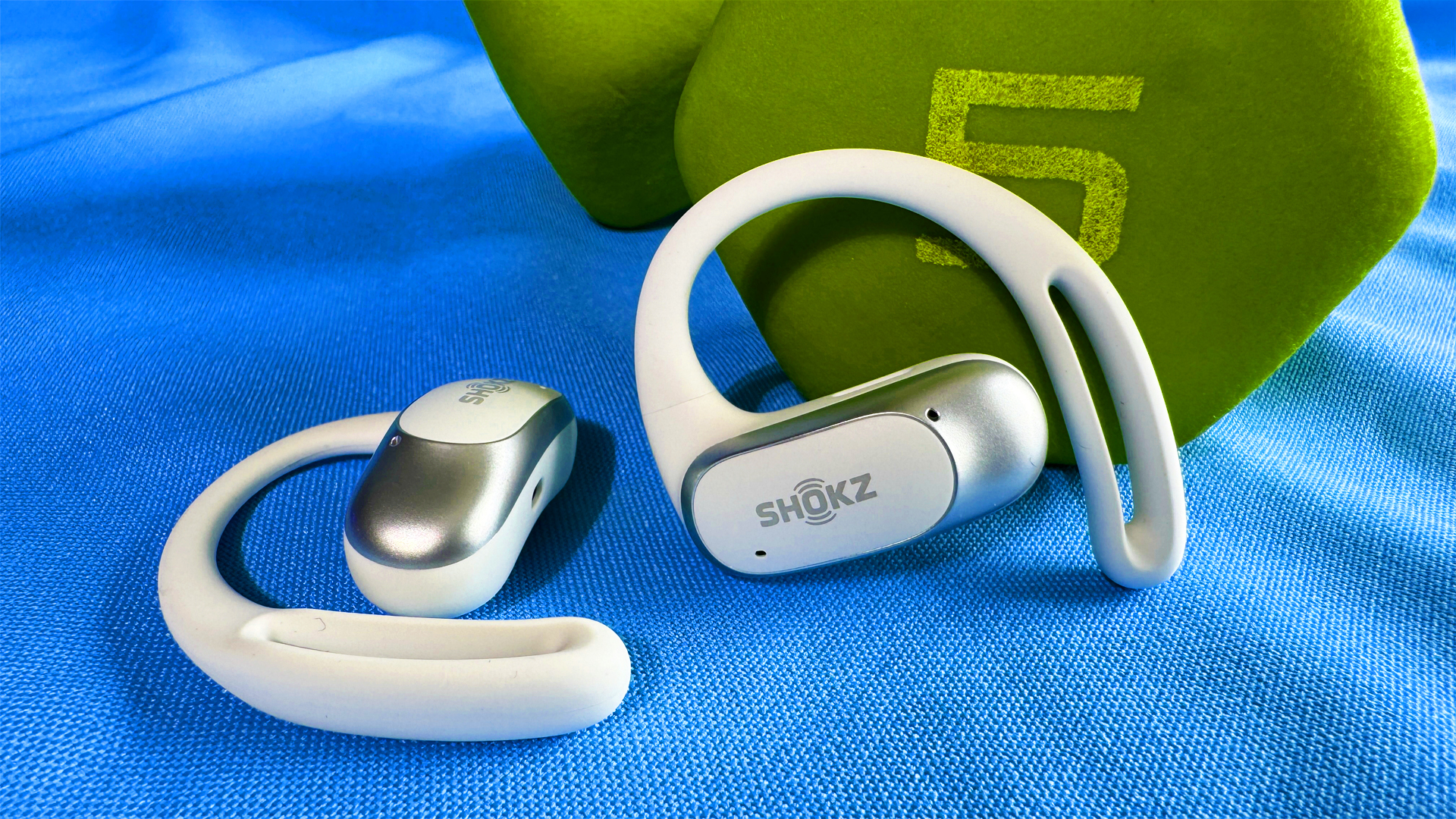
Let's begin with the OpenFit Air. There are a few reasons someone may want an open-ear product like this. They could have a few piercings in one or both ears. Maybe they don't like the feeling of in-ear devices. Then there are the usual use cases you read about: outdoor exercise or a worksite that requires unobstructed hearing.
Get the latest news from Android Central, your trusted companion in the world of Android
Either way, it's important to note first that the trade-off with having your ear canals unobstructed is the depth of bass you will get. It's simple physics, and there's really no way yet to overcome that. Some, like Bose, have come quite close, but you'll pay almost three times more for those than for the OpenFit Air.
Speaking of paying more, what differentiates the OpenFit Air from the Shokz OpenFit besides price? As the name suggests, although their weight difference is negligible, the new Air unit feels lighter than the OpenFit. Shokz took user feedback and moved the battery from the stem portion behind your ear on the OpenFit model to the module over your ear in the OpenFit Air.

Then, they added more curves to the entire earbud and the module that houses the 18 x 11mm custom composite dynamic driver unit. The earbud now sits at a 25.5-degree angle while the beveled driver housing sits at 18 degrees, so it fits better in your ear than the OpenFit.

In my testing and comparing the two units, I think this new fit will benefit some and be a negligible difference for others. I like the heavier feel of the OpenFit, and I have terribly small ear canals, so the smaller driver module of the OpenFit works fine for me. That said, the OpenFit Air does feel lighter and just as comfortable to wear for extended periods without feeling like it's flailing around the outside of your ear as some open earbuds do.
Sound out of the OpenFit Air has solid clarity in the mids and highs, with good separation in the stereo image. OpenFit Air sounds pretty good as open-ear products go, thanks to the OpenBass Air low-frequency algorithm and Shokz DirectPitch technology, which pushes sound directly into the ear while minimizing leakage.
The genres that shine brightest with the OpenFit Air tend to be pop, rock, folk, and classical. Hip-hop is fine. You'll be light on the "Boom" but still get decent "bap." Switching from music to movies, I didn't experience any latency in dialog, and the bass reproduction was satisfying enough to give action sequences in movies or anime the enjoyable thump they should have. And with movies that feature 5.1 audio, the stereo image these produce is solid.
Shokz OpenSwim Pro: What wowed me
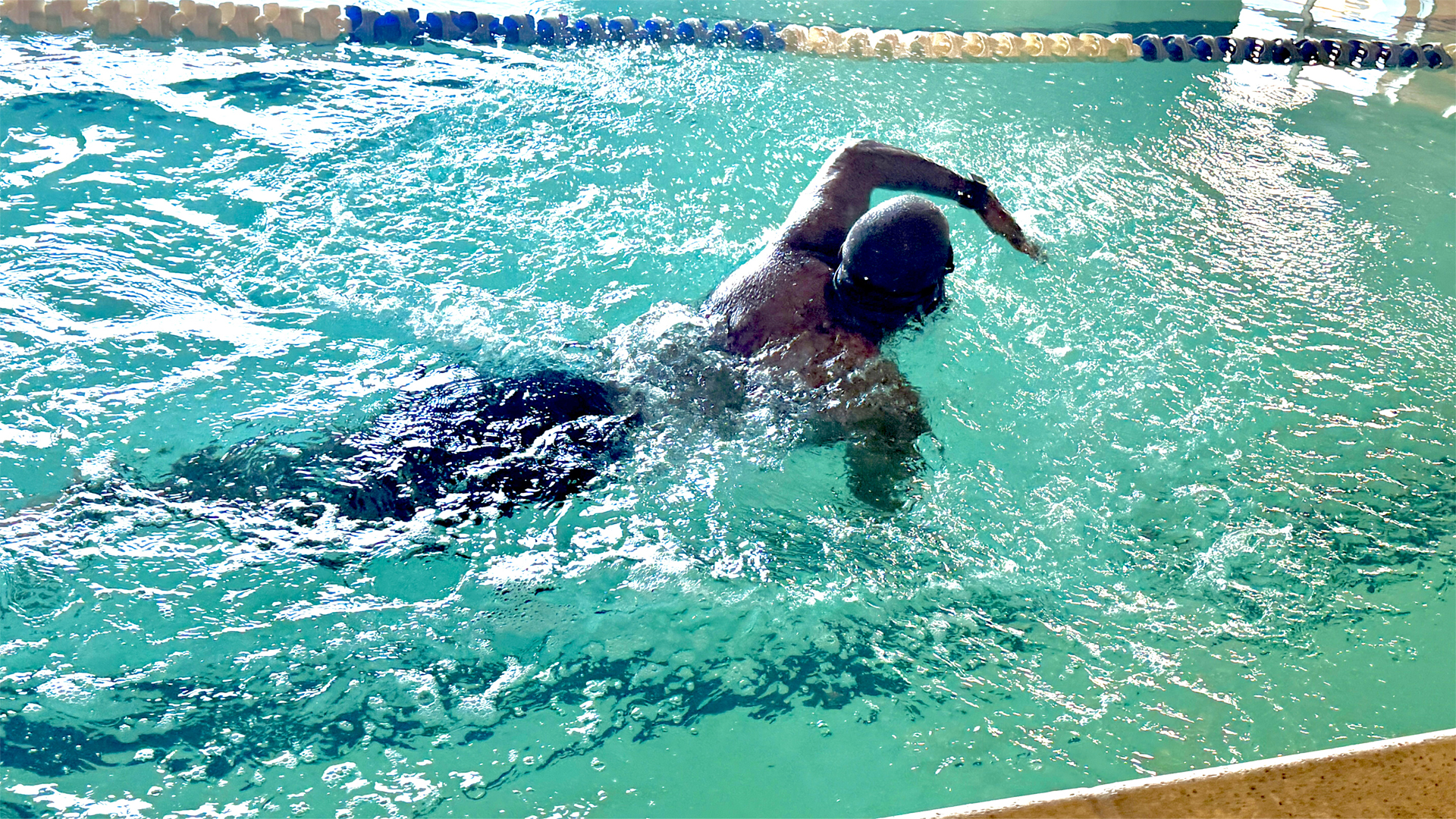
The previous OpenSwim product escaped my notice. Likely because it was just a standalone MP3 player in the body of a pair of bone-conduction headphones. I don’t swim often, so they weren't my jam. Shokz may have felt that sentiment from more users than me, so the OpenSwim Pro is no longer a one-trick seahorse.
You still get the MP3 player with an increased 32GB of storage for MP3, WMA, FLAC, WAV, AAC, M4A, and APE files. That's more storage than any competing product. Depending on which file types you use, you can cram around 8,000 songs into them — plenty for an Ironman or two. Now, though, you get more utility out of them with the included Bluetooth 5.4 radio so that when you aren't in the pool, you can stream music, movies, podcasts, or whatever you fancy, right from your phone.
What's most interesting about these headphones is their underwater sound quality. It is seriously impressive. I'd almost say that they sound better underwater! Imagine that. This underwater awesome is achieved by OpenSwim Pro having triple-sealed components rated for IP68 dust and water ingress which means you're good up to (two meters) six feet deep for up to two hours. That's the first part.
Once you're in the pool, you can switch the headphones to MP3 mode and choose the Swimming EQ preset (you also have a Standard EQ preset). The Swimming preset flattens the sound profile, sounding tinny out of the water and killing bass response but giving you an underwater listening experience that is highly impressive. The bass magically reappears, giving you a delightfully robust sound as you hit those freestyle strokes or do some underwater laps.
Just don't pass six feet of depth, since it could damage the OpenSwim Pro.
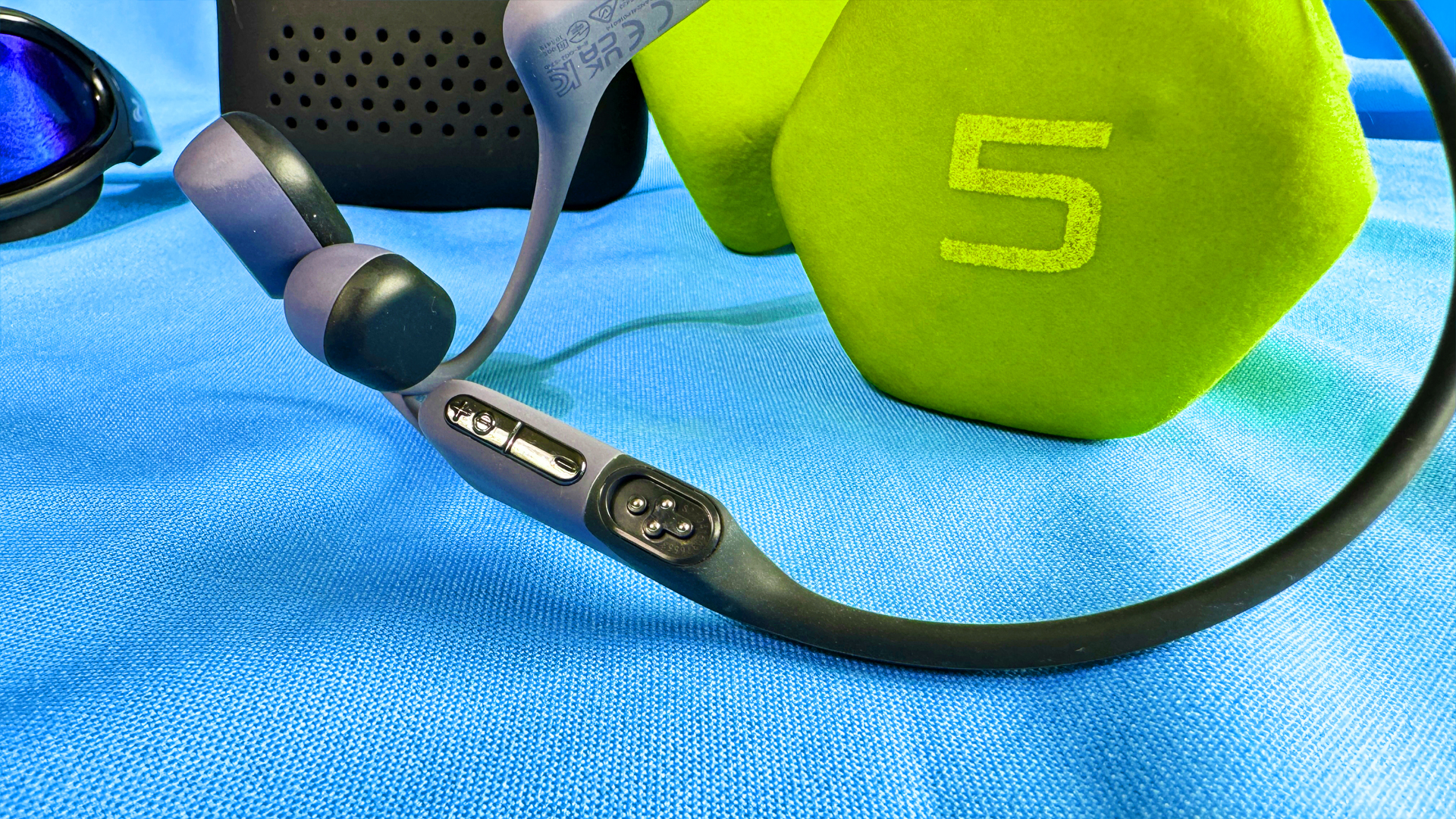
The best part of this swimming tech is that you don't need the app to access it. You can simultaneously press the volume down and volume up/power buttons to switch the OpenSwim Pro from Bluetooth to MP3 mode. The controls — the large multifunction button on the front and those volume buttons underneath the right arm of the headband — are just as responsive wet as they are dry.
Below those volume buttons is the proprietary four-pin magnetic charging port. To keep everything sealed and protected against water ingress, you'll use pogo pins instead of USB-C.
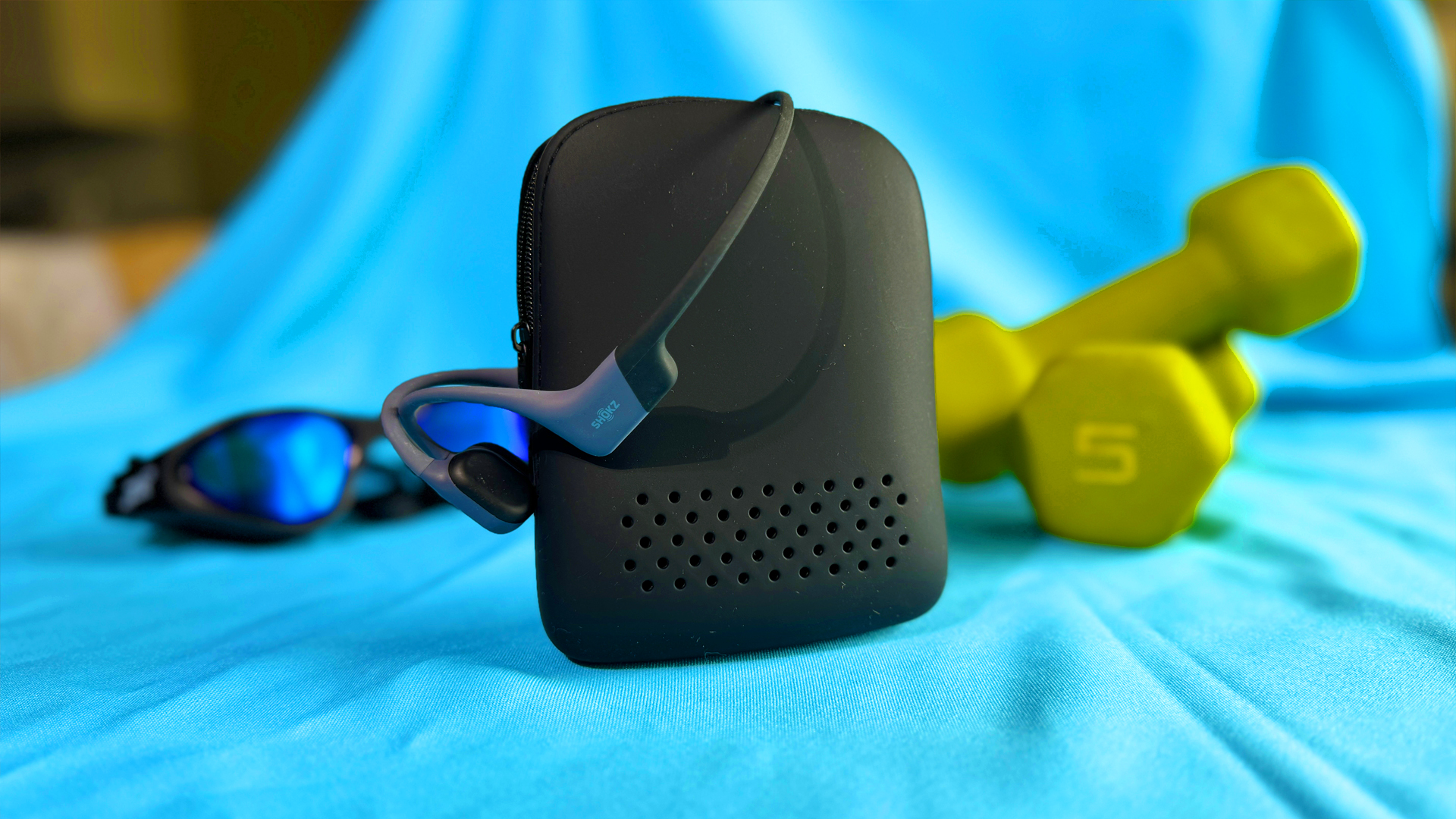
The fine folks at Shokz also considered the case when it comes to getting wet. It's wedge-shaped so it can stand up and has drainage holes on the back to accommodate airflow for damp headphones drying. Being upright ensures those drainage holes don't get blocked.
Overall, on land, the audio quality from the OpenSwim Pro is really good, with a caveat I'll get to in a moment. They have excellent sound separation in MP3 mode and Bluetooth mode. You have to remember that you're using open-ear audio devices, so there's a level of warmth from the mids and lows that you aren't going to get like in-ears, but despite that, the audio output is pleasing.
Shokz OpenSwim Pro, OpenFit Air: What could use improvement
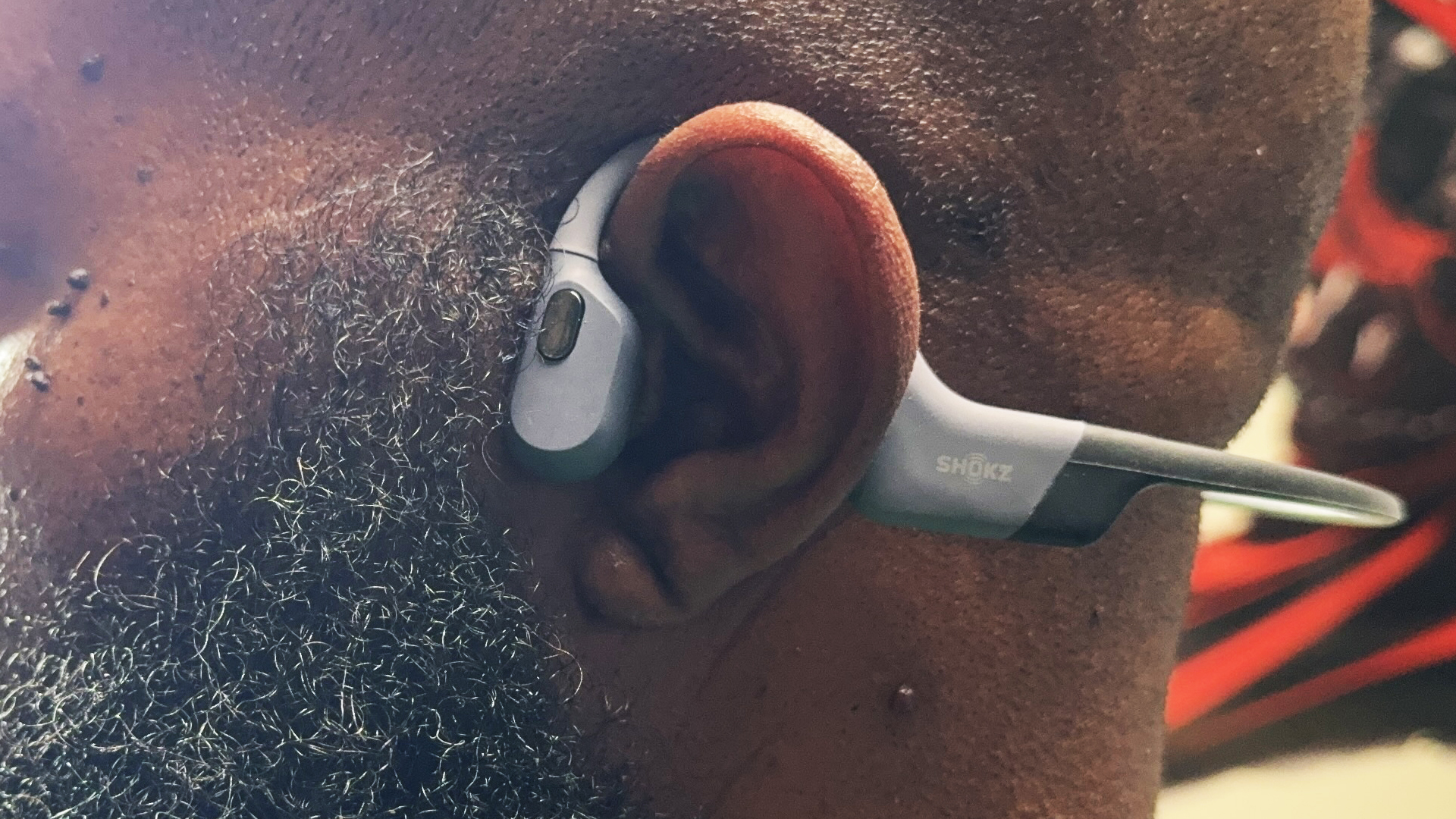
There isn't much I take issue with regarding both of these devices, but for the OpenSwim Pro, the bass passed through the bone conduction pads may get annoying for some people and too much for those who are ticklish. It vibrates a lot! Like "PS5 gaming remote haptic feedback" a lot. I think this is a feature that some people will accept but others will hate.
Sorry to be a wet blanket, triathletes, but I have to mention the inability to use these earbuds in salt water. So, no ocean use for you. If you do happen to purchase the OpenSwim Pros and try them in that deep blue sea, Shokz recommends that you wash them off with fresh water and dry them immediately.
One other thing I'd like to see on future OpenSwim Pro units is the ability to adjust the neck, or is it a head-band? For me it sits at the base of my skull, so technically, I guess that makes it a headband.
Despite the new angled design, the OpenFit Air feels "loose," hovering over my ear. For my ear geometry, the OpenFit feels like it sits closer to my ear, but ears are like fingerprints; no two are the same, so your mileage will vary in how they feel on you.
The last thing you may have an issue with is the case size. It's a hair larger than the previously released OpenFit, so it is "purse-able," but pocketable? Not really. It's going to leave quite the imprint sitting in your pockets.
Competition

If swimming gear is what you're looking for, there are actually a few other options on the market, and we have an entire roundup of open-ear earbuds to consider if it's the OpenFit Air you were curious about. First, let's talk OpenSwim Pro competitors. The H20 Audio Tri Multi-Sport has a nice, warm bass-heavy sound but, unlike the OpenSwim, only has 8GB of storage for music. They're $20 less but are only rated for water ingress, not dust, and their controls can be finicky.
The Zygo Solo takes a novel approach to keeping you in the water and entertained by using an FM radio transmitter, which does a lot better than Bluetooth underwater. The downside is that compared to the OpenSwim Pro's nine hours of battery life, you'll get just three hours. Oh, and they're a lot bigger than the OpenSwim Pro.
There are a couple of others, but they lack either the battery life, the storage capacity, or the sound quality of the OpenSwim Pro.
For OpenFit Air competition, the premium upgrade that gives you upgraded sound, a jaw-dropping "Immersive Sound" mode, and better battery life if you don't use that immersive mode is the Bose Ultra Open earbuds. These are almost three times the cost, though. You'll pay $299 ordering them from Amazon.
1MORE Fit Open Earbuds S50 have a long name and an even longer battery life: 11 hours. They're IPX7, so no dust ingress rating, and they'll cost you $10 more. People with smaller ears may experience fit issues with these.
Anker also offers some competition in their Soundcore AeroFit Pro, which gives you an impressive 14 hours of playback time and supports LDAC playback. They come with a detachable neckband to shore up the fit for those high-intensity workouts and they sound great at lower volumes.
Shokz OpenSwim Pro, OpenFit Air: Should you buy them?
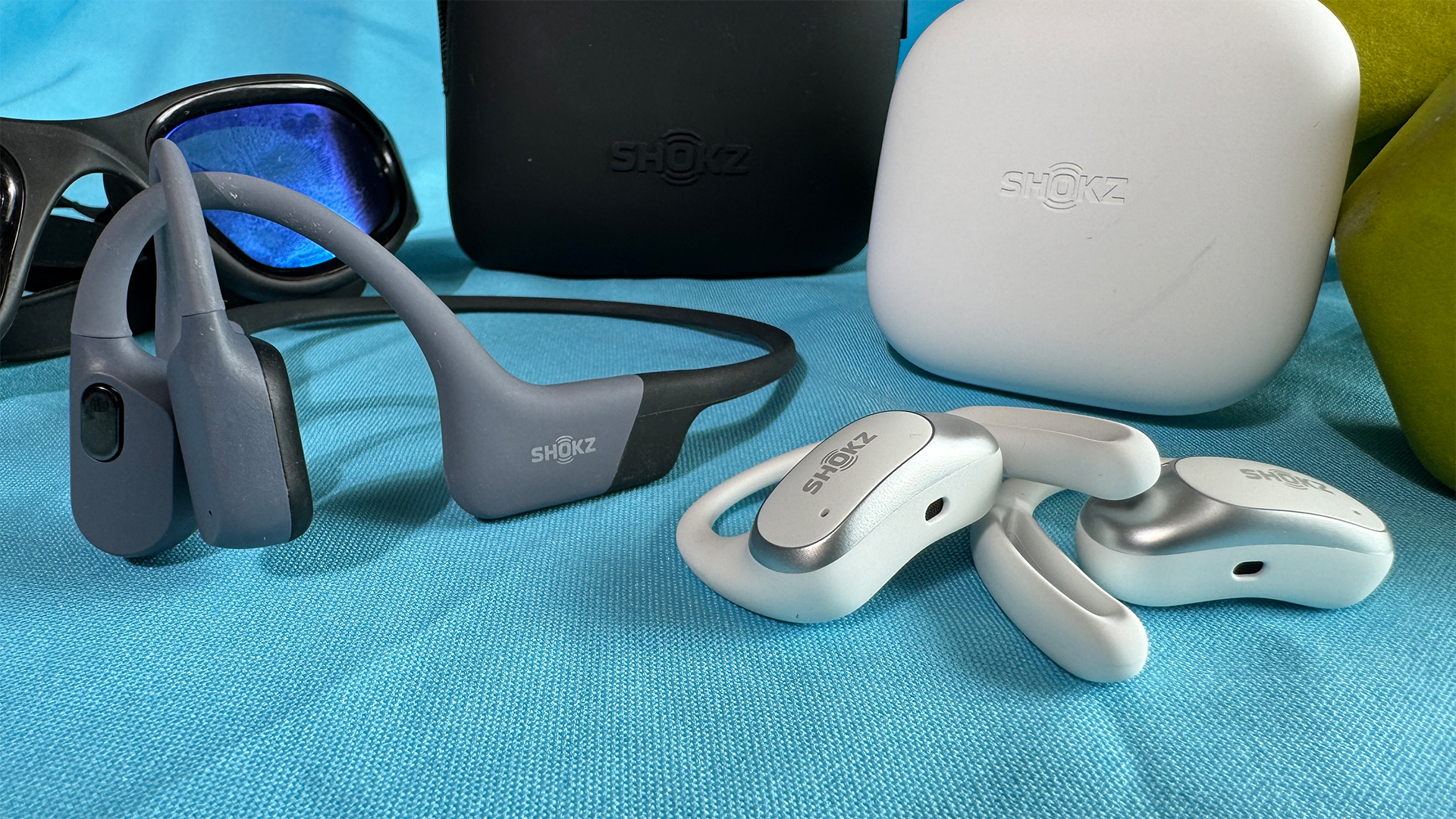
You should buy OpenFit Air if...
- You want relatively inexpensive open-ear earbuds
- You have concha piercings and in-ears don't fit
- You want open-air earbuds that sound good
You shouldn't buy OpenFit Air if...
- You are a bass lover
- You need more than 6 hours of battery life
You should buy OpenSwim Pro if...
- You spend a lot of time in the water
- You want something with great sound submerged
- You want something for surf and turf
You shouldn't buy OpenSwim Pro if...
- You're very ticklish. Seriously.
- You don't like neckband configurations
- You need earbuds that can withstand salt water
If you want a product that will "Wow!" you underwater, the OpenSwim Pro is that product. It has nine hours of battery life (six hours in MP3 mode), is IP68 rated for two hours in the pool at up to six feet deep, and has an MP3 mode with 32GB of storage, making it a hard product to beat in this category. Best of all, Bluetooth 5.4 makes it… not so niche. Despite the potentially ear-tickling bone conduction modules, the OpenSwim Pro is easily recommended for the mermaids and mermen among us (Mer-persons?).
OpenFit Air has stiff competition in the open-ear market. Still, its light weight, solid sound, IP54 rating, wallet-friendly price point, and good call quality make it a good all-around open-ear earbud for those who need or prefer this design.
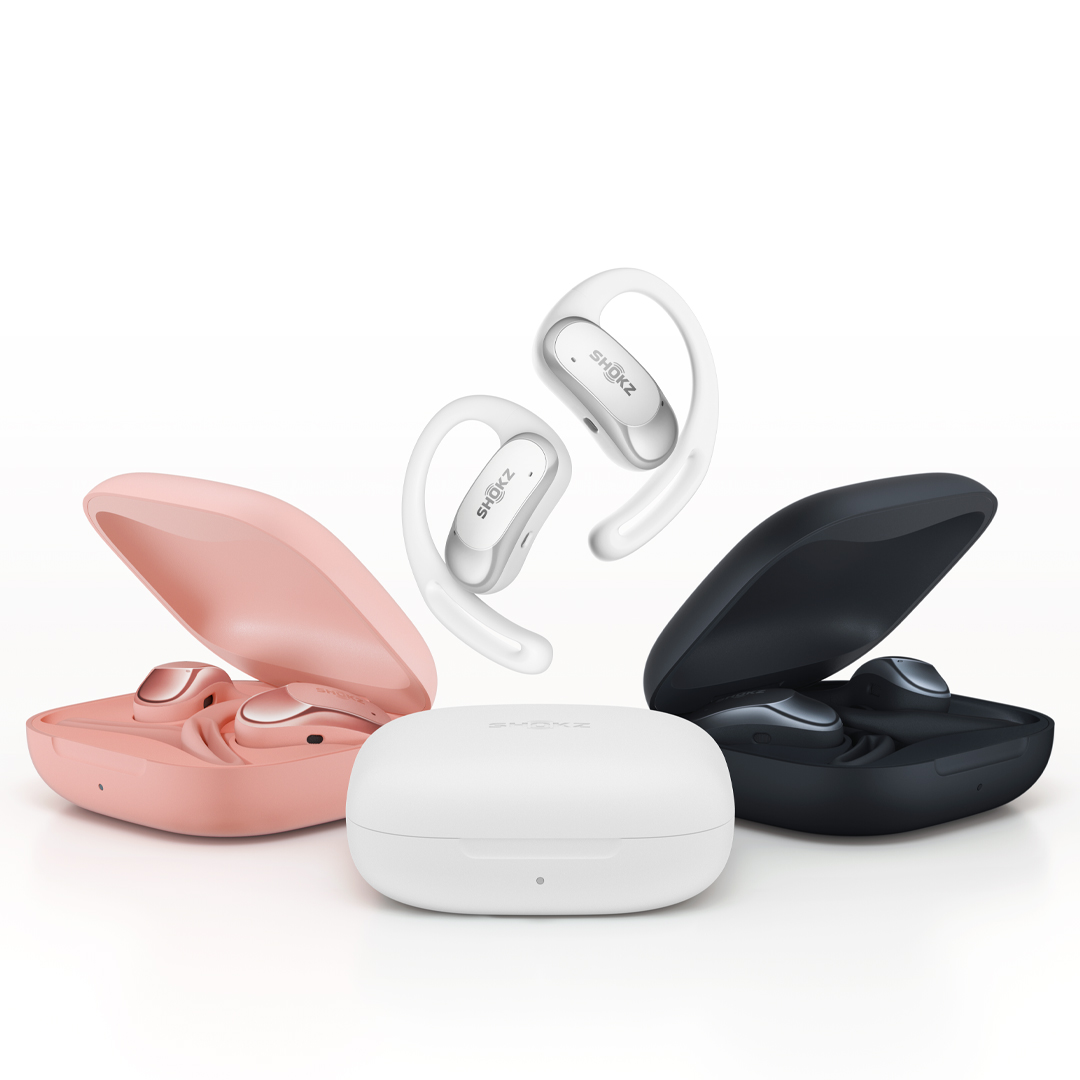
Lighter than Air
The Air version of Shokz OpenFit line feels light as air when wearing, but it's the solid sound quality, and a design which keeps your ears unobstructed which should have you giving these a look!
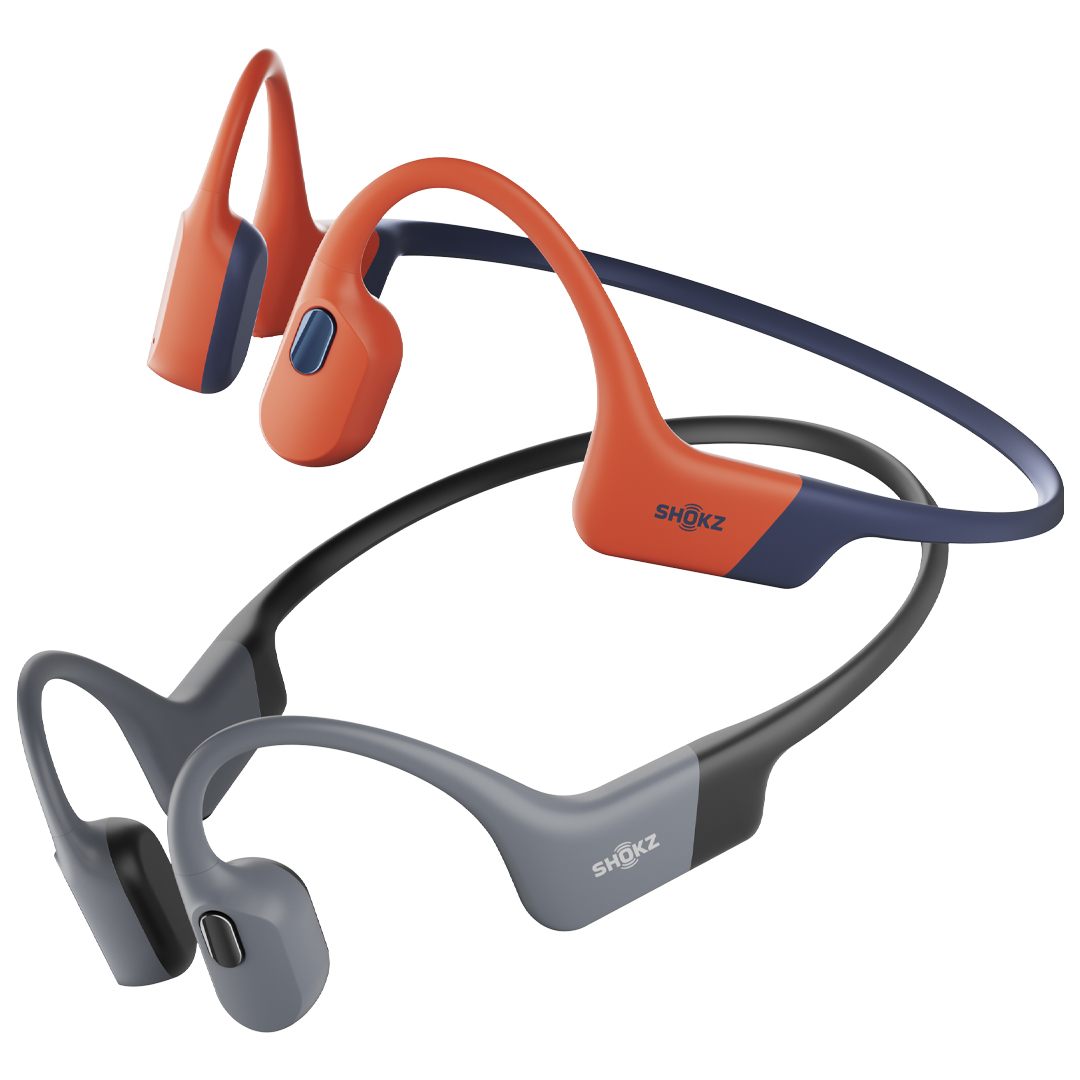
OpenSwim Pro are impressive under water!
32GB of MP3 player storage, 9 hours of battery life (6 in MP3 mode), and robust IP68 water-resistance make these one of the top headphones for those who spend a lot of time in the water.

Tshaka Armstrong is a nerd. Co-Founder of the non-profit digital literacy organization, Digital Shepherds, he’s also been a broadcast technology reporter, writer and producer. In addition to being an award-winning broadcast storyteller, he’s also covered tech online and in print for everything from paintball gear technology, to parenting gadgets, and film industry tech for Rotten Tomatoes. In addition to writing for Android Central, he’s a video contributor for Android Central and posts everything else to his own YouTube channel and socials. He blathers on about his many curiosities on social media everywhere as @tshakaarmstrong.
You must confirm your public display name before commenting
Please logout and then login again, you will then be prompted to enter your display name.
